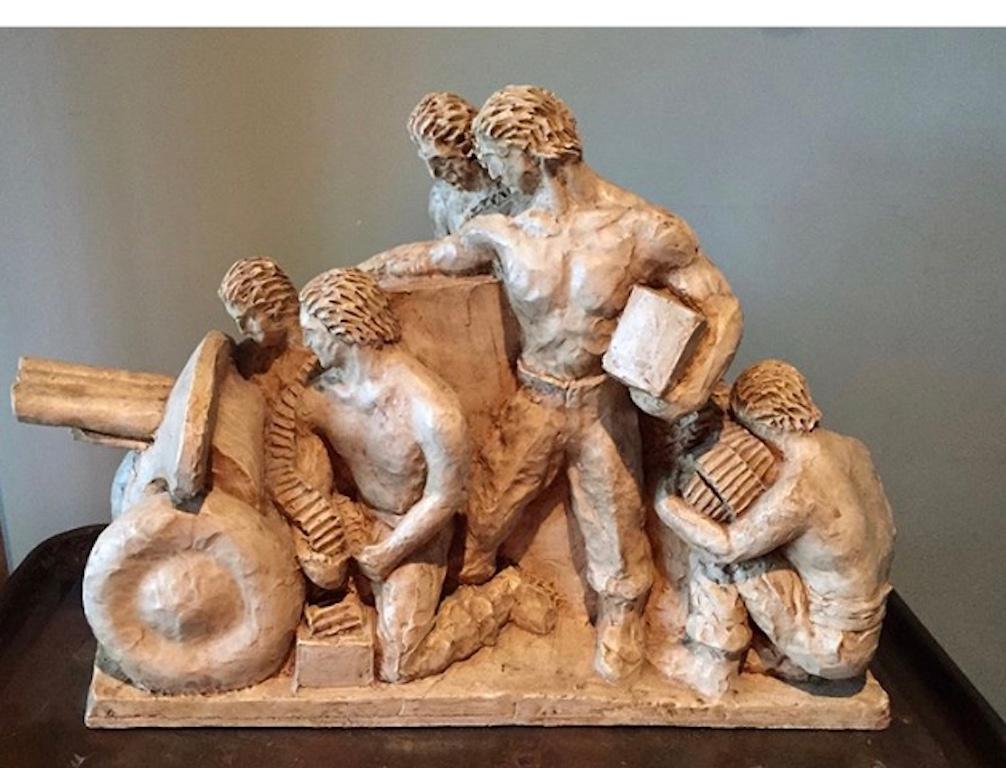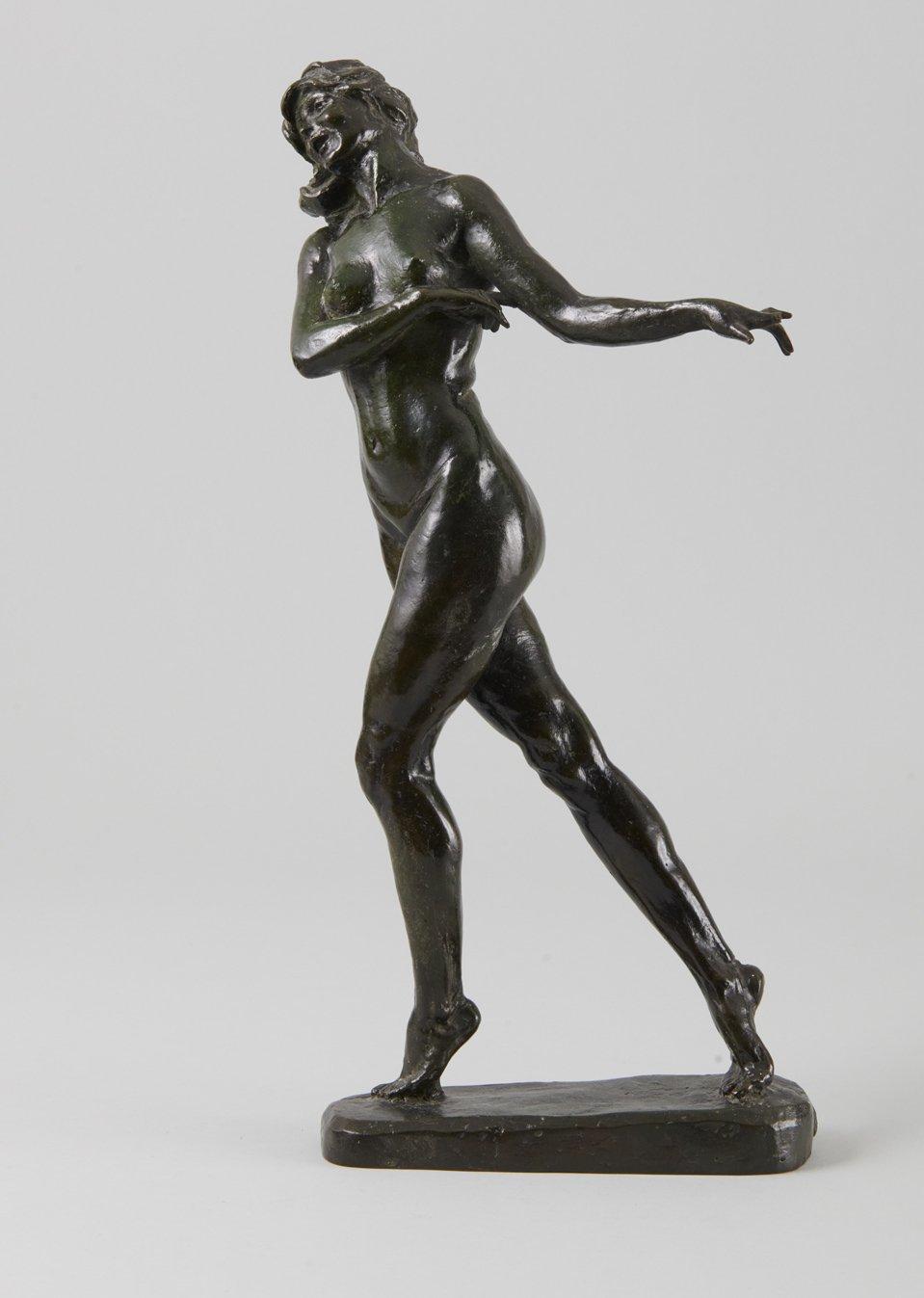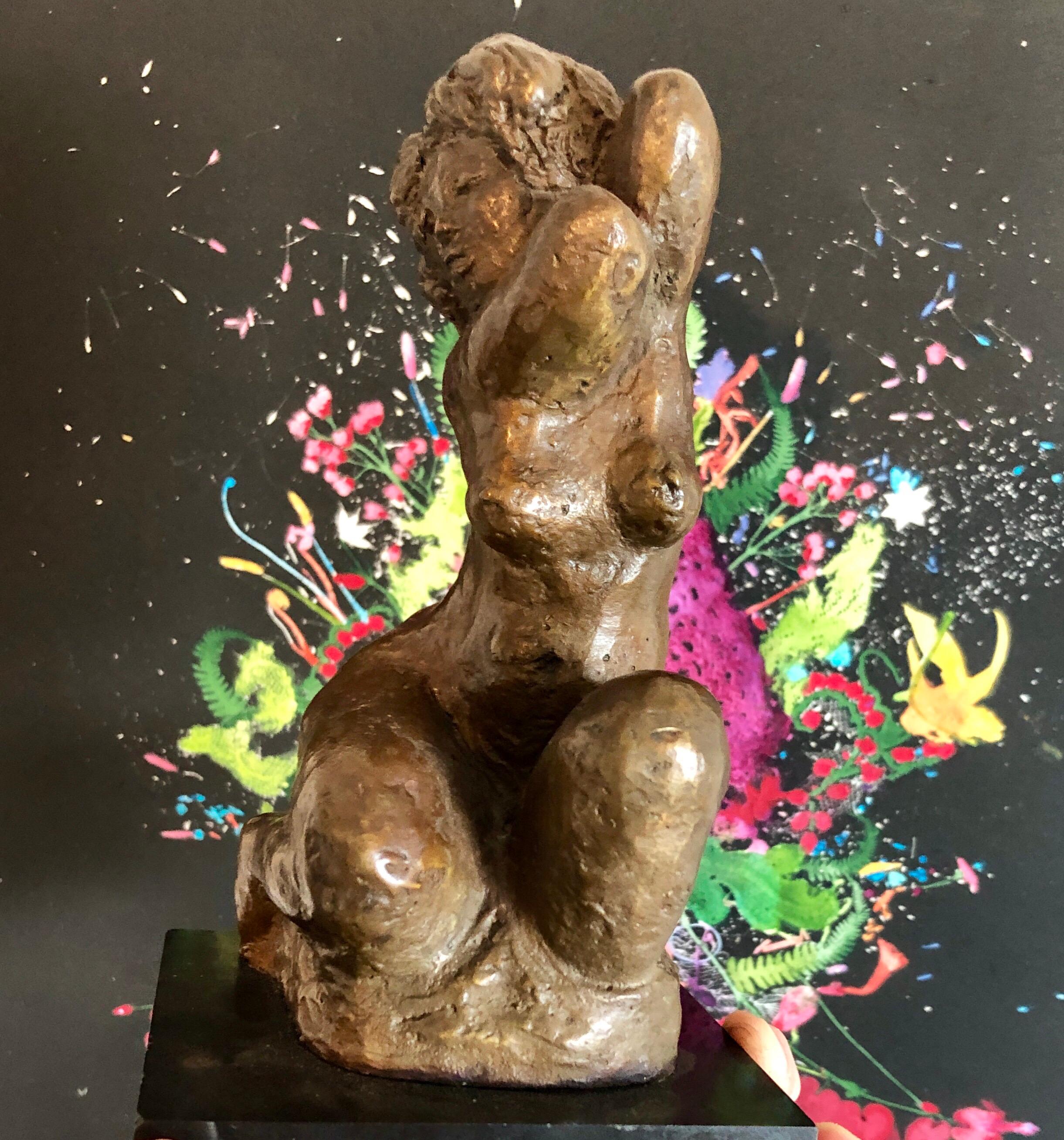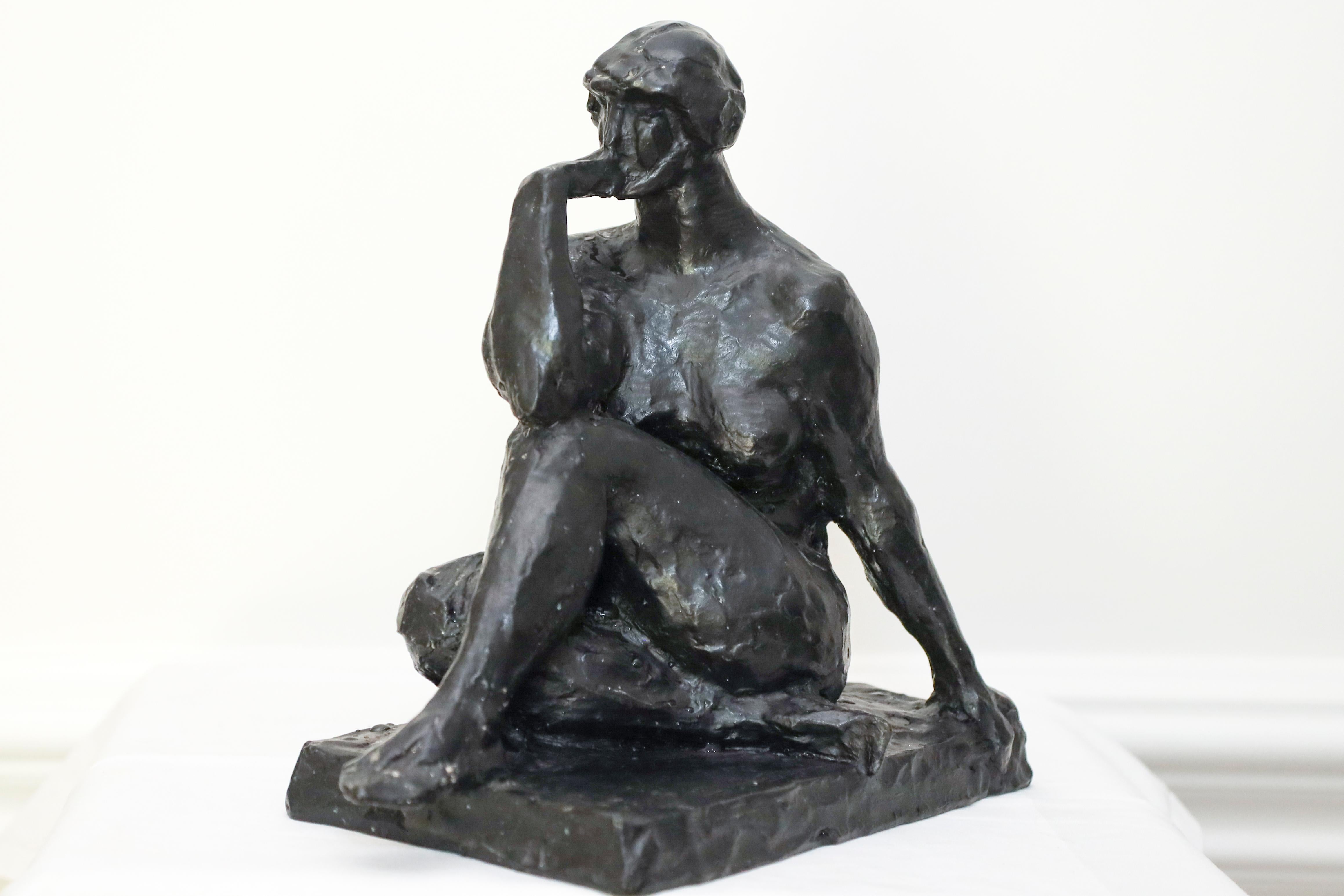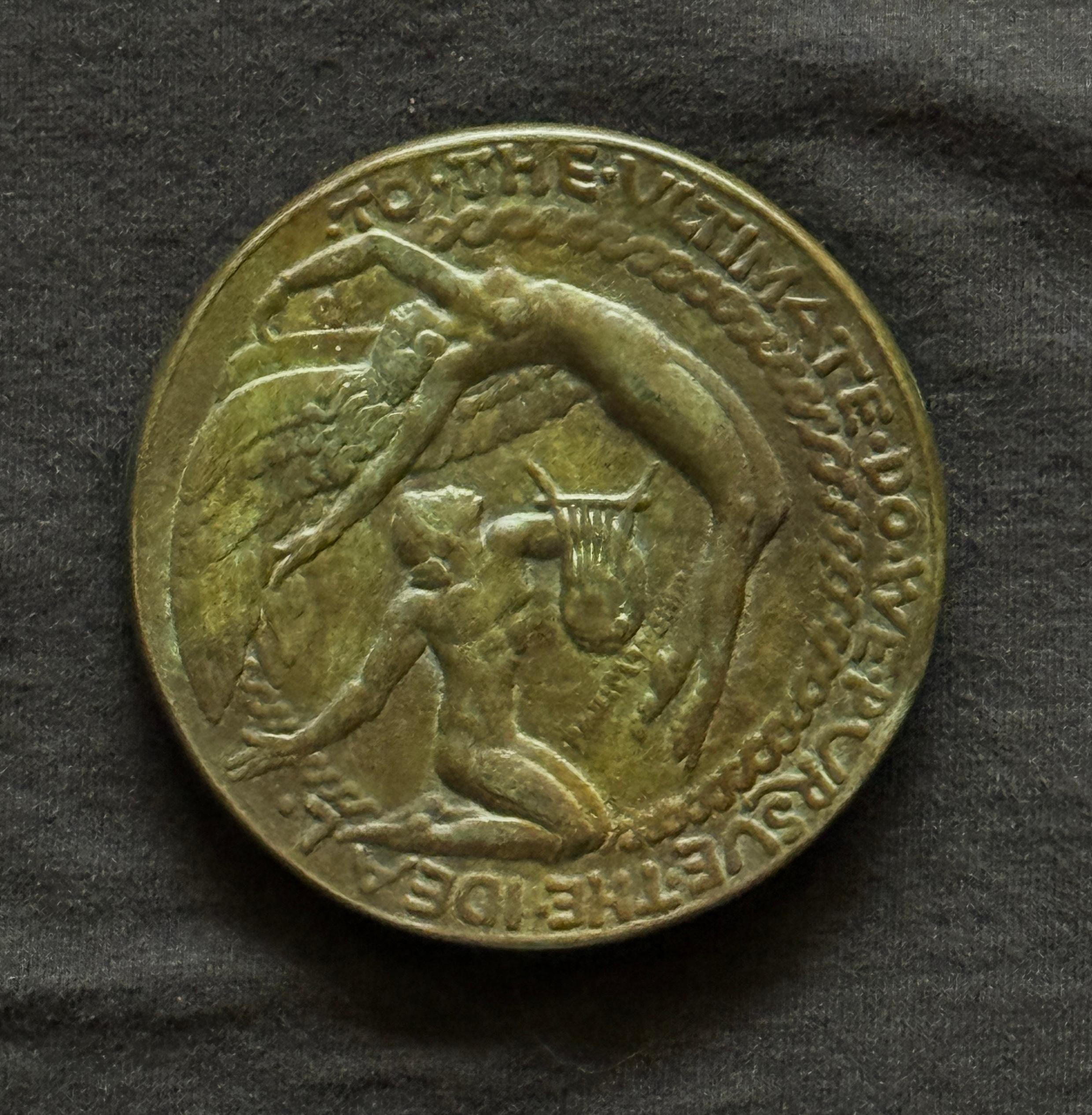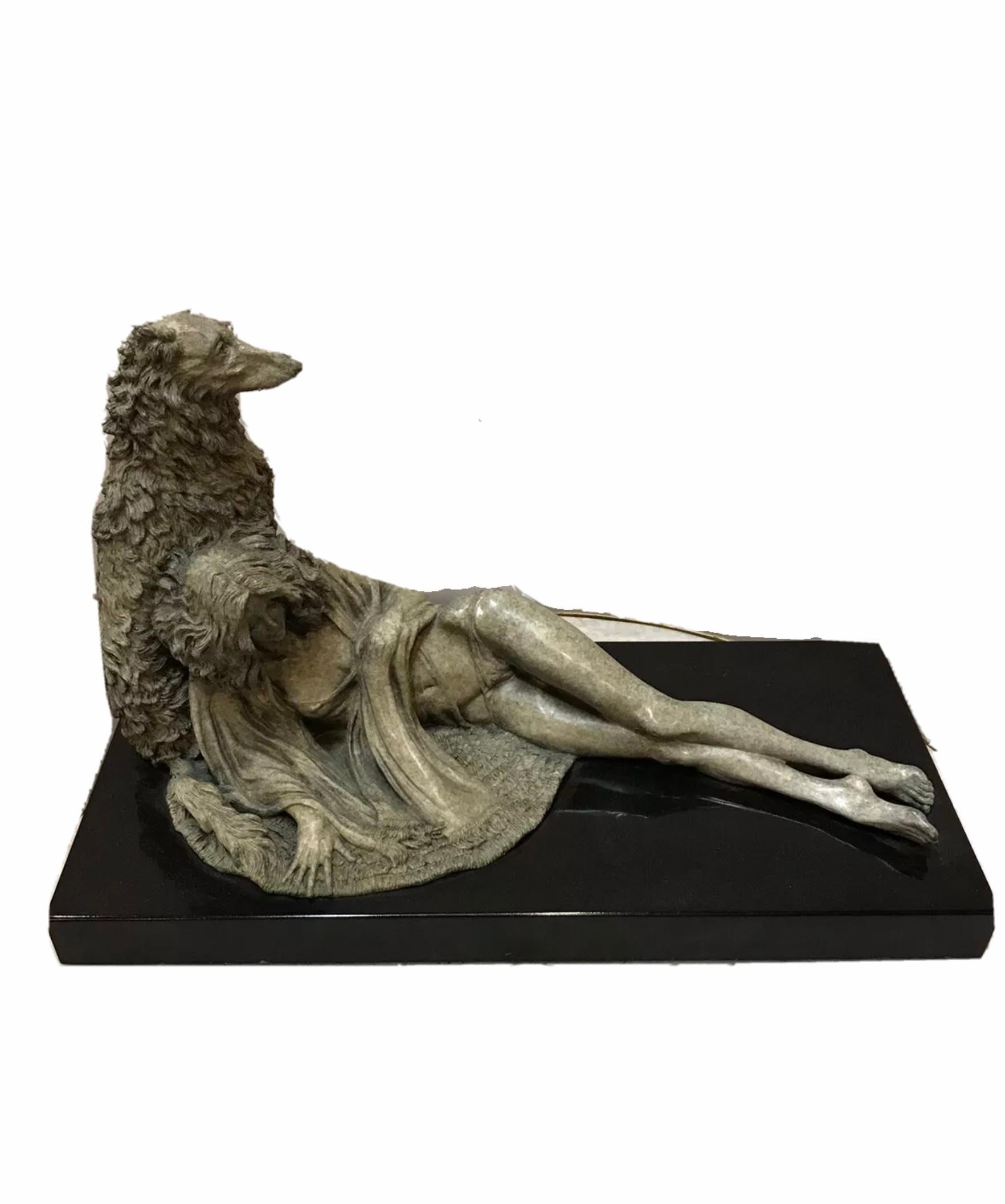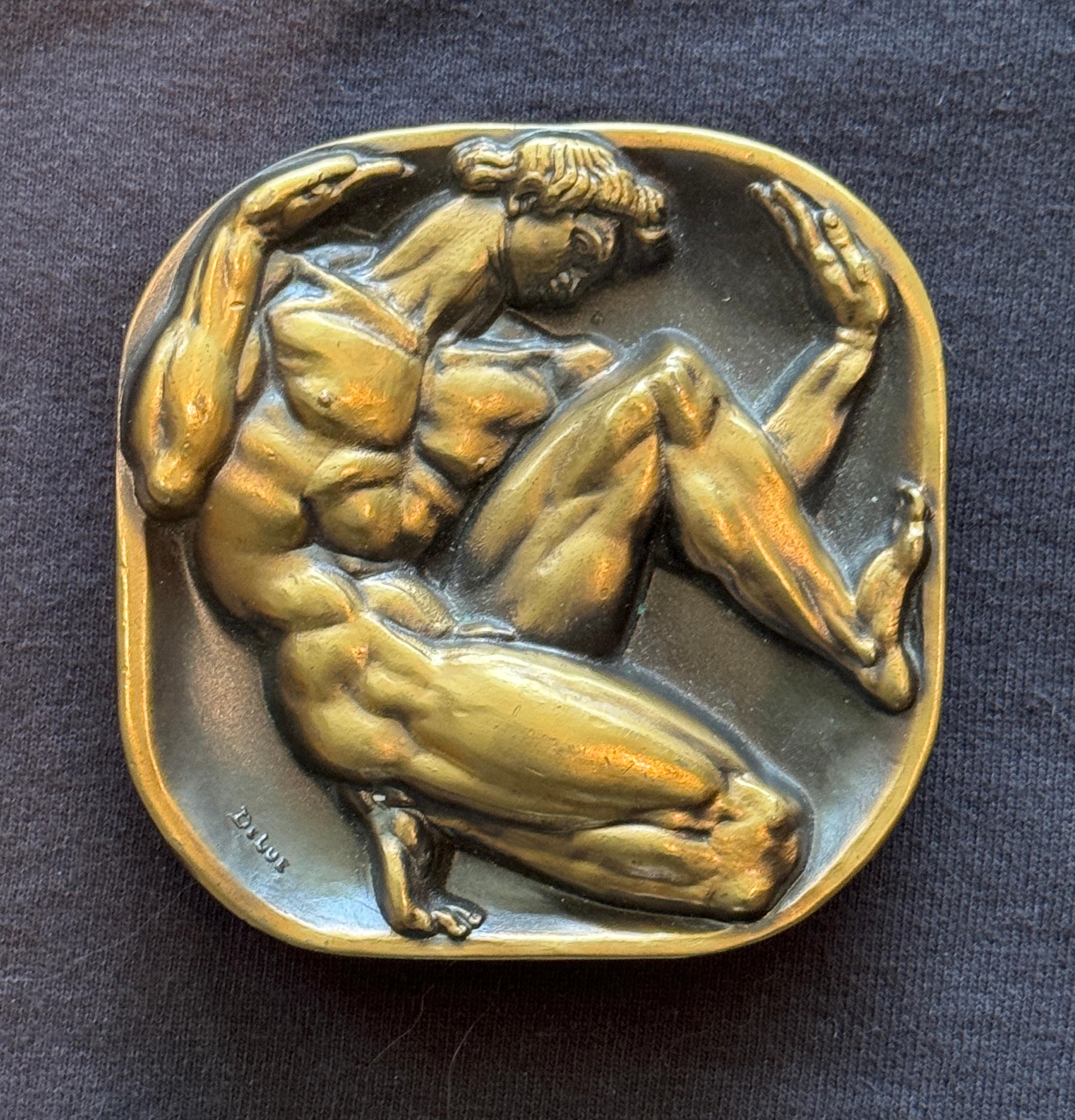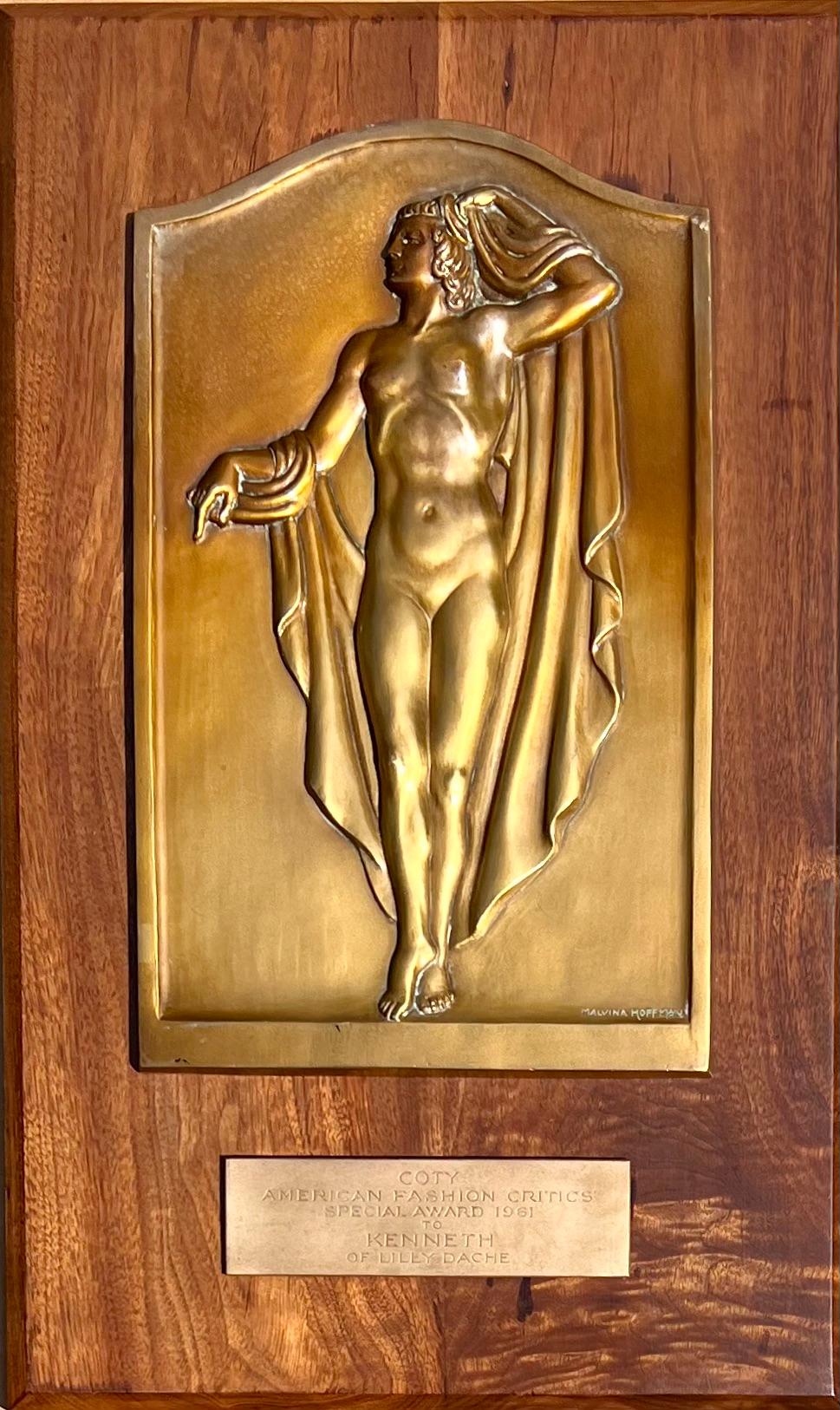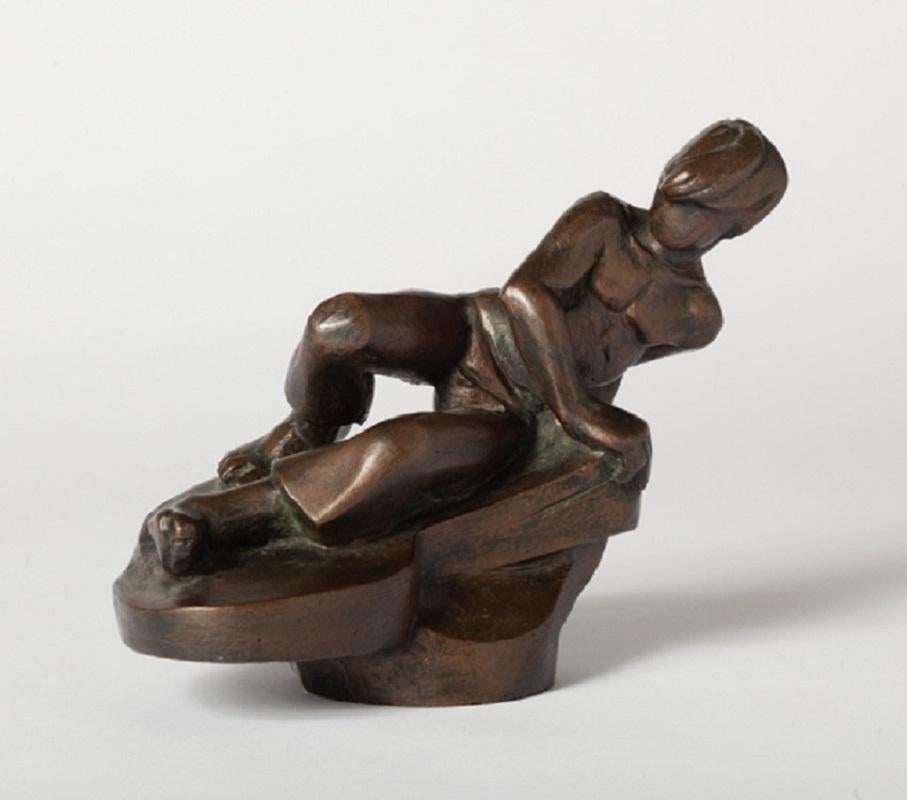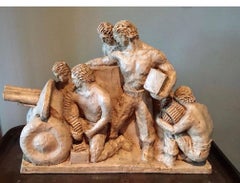All Directions
View Similar Items
Want more images or videos?
Request additional images or videos from the seller
1 of 8
Frank HyderAll Directions1987
1987
About the Item
- Creator:Frank Hyder (1951, American)
- Creation Year:1987
- Dimensions:Height: 23.5 in (59.69 cm)Width: 26.5 in (67.31 cm)Depth: 1.5 in (3.81 cm)
- Medium:
- Movement & Style:
- Period:
- Condition:
- Gallery Location:San Francisco, CA
- Reference Number:Seller: hyder/all/011stDibs: LU66633646441
About the Seller
5.0
Platinum Seller
These expertly vetted sellers are 1stDibs' most experienced sellers and are rated highest by our customers.
Established in 1999
1stDibs seller since 2017
691 sales on 1stDibs
Typical response time: 1 hour
More From This SellerView All
- Native American Indian Woman and BabyLocated in San Francisco, CAThis artwork "Native American Indian Woman and Baby" c.2000 is an original cast paper bas relief by noted Swedish/American artist Carlo Wa...Category
Early 2000s American Modern Figurative Sculptures
MaterialsOther Medium
- Lady with BirdLocated in San Francisco, CAThis artwork "Woman with Bird" c.2000 is an original cast paper bas relief by noted Swedish/American artist Carlo Wahlbeck, b. 1933. It is hand signed a...Category
Early 2000s American Modern Figurative Sculptures
MaterialsOther Medium
- Mission San Xavier Del Bac, Tucson ArizonaBy Huntington WitherillLocated in San Francisco, CAThis Photograph titled "Mission San Xavier Del Bac, Tucson Arizona" is a gelatin silver print by noted American photographer Huntington Witherill, born ...Category
Late 20th Century American Modern Black and White Photography
MaterialsSilver Gelatin
- RibbonsLocated in San Francisco, CAThis photographic triptych Titled "Ribbons" 1998 is a gelatin silver print on paper by noted American/Canadian artist Carol Marino, born 1943. It is hand signed, dated 1998 and titled in dark red ink by the artist. The size of each photograph is 16 x 11 inches, sheet size is 16. 5 x 11.5 inches. The three together is 34.65 x 11.5 inches, framed is 29.25 x 43 inches. Framed in a silver and maple frame. The photographs are in excellent condition, the frame has some minor scratches and will be replaced by a similar or better new frame before shipping, which will make the overall condition excellent. About the artist: CAROL MARINO (Canadian, b. United States, 1943) In reaction to the industrial landscape of Pittsburgh, where she grew up, Carol Marino responds to her present, comparatively untouched environment with a certain instinctive attachment to it. Photographing near and around her home in northern Ontario, she focuses on flora and fauna in their natural habitats. For her, photography is a vehicle to express her concern for and engagement with her natural surroundings and her work often shows the influence of artists such as Edward Weston or Imogen Cunningham, particularly in its sensuality. Marino generally makes only a single print from each negative, often grouping three or four images together to create assemblages. The occasional addition of patterned colour-pigmented Select Solo Exhibitions 2006 Newfoundland, Corkin Shopland Gallery, Toronto 2001 New Work, Jane Corkin Gallery, Toronto 1999 Recent Work, Jane Corkin Gallery, Toronto 1996 Jane Corkin Gallery, Toronto 1993 Jane Corkin Gallery, Toronto 1991 The Koffler Gallery, Toronto New Work, Jane Corkin Gallery 1988 Works in Colour, Jane Corkin Gallery 1986 Recent Work, Jane Corkin Gallery 1984 Jane Corkin Gallery, Toronto 1983 Kodak Gallery, Rochester, New York 1982 Jane Corkin Gallery Kensington Fine Art Gallery, Calgary 1981 Marcuse Pfeifer Gallery, New York 1980 Jane Corkin Gallery 1978 The David Mirvish Gallery, Toronto 1976 The David Mirvish Gallery, Toronto 1973 The Baldwin Street Gallery, Toronto Select Group Exhibitions 2002 Four Canadian Photographers, Samuel P. Harn Museum of Art, University of Florida 1997 Hot Art for Hot Days, Jane Corkin Gallery 1996 Gallery Artists, Jane Corkin Gallery 1995 Contemporary Animals, Jane Corkin Gallery 1994 15th Anniversary Exhibition, Jane Corkin Gallery 1992 Women on Women, Jane Corkin Gallery 1991 Four Canadians, Vision Gallery, San Francisco 1990 Is There Still Life in Still Life or is Nature Morte?, Watson de Nagy, Houston, Texas 1989 Contemporary Canadian Photography, Hotel La Citadelle, Montreal, PQ 1988 Figurative Force, The Gallery / Stratford, Ontario 1987 An Exhibition of Works in Colour, Jane Corkin Gallery Summer Gardens – Summer Flowers, Jane Corkin Gallery 1986 Masterpieces from the Gallery Collection, Jane Corkin Gallery Canadian Contemporary Photography, Watson de Nagy, Houston, Texas 1985-6 Retrospective, Jane Corkin Gallery 1985 Jane Corkin Gallery 1984 Santa Claus Exhibition, Jane Corkin Gallery Summer Salon ’84, Jane Corkin Gallery 1983 Galerie Zur Stockeregg, Zurich, Switzerland 1981 Le Troisième Salon, Jane Corkin Gallery 1979 Canadian Images Conference, Trent University, Peterborough, ON Opening Exhibition, Jane Corkin Gallery 1978 The Baldwin Street Gallery, Toronto 1975 National Film Board - International Women’s Year Exhibition Select Solo Museum Exhibitions 1987 Life Forces, Agnes Etherington Art Centre, with Catalogue, Queen’s University, Kingston, ON Select Group Museum Exhibitions 2009 Dancing While Driving, Corkin Gallery, Toronto 2000 From the Collection: Flowerpieces, Canadian Museum of Contemporary Photography 1995 The Hat My Father Wore, Agnes Etherington Art Centre, Kingston 1992-4 Flora Photographica: The Flower in Photography...Category
Late 20th Century American Modern Black and White Photography
MaterialsBromoil
$10,000 - Ice Form #3, Yosemite National ParkBy Huntington WitherillLocated in San Francisco, CAThis Photograph titled "Ice Form #3, Yosemite National Park" is a gelatin silver print by noted American photographer Huntington Witherill, born...Category
Late 20th Century American Modern Black and White Photography
MaterialsSilver Gelatin
- Balinese Mother and ChildBy Beniamino BufanoLocated in San Francisco, CAThis artwork titled " Balinese Mother and Child" 1970 is an original color lithograph on Japan nacre paper by noted Italian/American artist Beniamino Benevenuto Bufano, 1890-1970. It is hand signed, inscribed Bon a Tirer and dated 1970 in pencil by the artist. The image size 14 x 9,75 is inches, framed size is 27.35 x 21.75 inches. Published by First Impressions, San Francisco, printed by Fikrat Al-Khouri at First Impressions Graphic Society. it is beautifully custom framed in a wooden gold frame, with gold color spacer. It is in excellent condition. About the artist: Beniamino Benvenuto Bufano was born in San-Fele, Italy on Oct. 14, 1889. At age three Bufano's family brought him to NYC where he spent his childhood and was educated by private tutors. He studied at the ASL in NYC from 1913-15, the pupil of James L. Fraser, Herbert Adams, and Paul Manship. He came to San Francisco in 1915 to work on a sculpture for the PPIE. For awhile he worked in the studio of coppersmith Dirk van Erp. He then traveled extensively for four years in France, Italy, India, and China. After returning to San Francisco in 1921, he remained there the rest of his life except for visits to the Orient and Europe. Always a radical, he lost his teaching position at San Francisco Institute of Art in 1923 because he was too modern for the conservative faculty. He later taught at UC Berkeley and the CCAC (1964-65). Henry Miller wrote of him, "He will outlive our civilization and probably be better known, better understood, both as a man and artist, five thousand years hence." His work, simple in style and monumental in scale, includes smoothly rounded animals in granite and icons sheathed in stainless steel. Only five feet tall, Bufano was a controversial, free spirit until his death in San Francisco on Aug. 16, 1970. Member: SFAA; NSS; American Artists Congress. Exh: Whitney Museum (NYC), 1917; Arden Gallery...Category
Late 20th Century American Modern Nude Prints
MaterialsLithograph
You May Also LikeView All
- "Pioneer Family" WPA American Modernism Plaster Maquette Realism 20th CenturyBy William ZorachLocated in New York, NY"Pioneer Family," 23 1/2 x 16 1/4 x 10 3/4 inPlaster. c. 1927. Unsigned. Realism The Smithsonian has a cast of this sculpture in its collection. Pictured on the cover of “The Sculpt...Category
1920s American Modern Figurative Sculptures
MaterialsPlaster
$31,200 Sale Price20% Off - 2 Sculptures: "The Power" & "The Glory" WPA Depression WWII era mid 20th centuryBy Agnes YarnallLocated in New York, NY2 Sculptures: "The Power" & "The Glory" WPA Depression WWII era mid 20th century by Agnes Yarnall circa 1940s. Sculptor, painter, poet and artistic historian, Agnes Yarnall has, since the age of six been breathing life into her art. Renowned as a sculptor, whose commissioned portrayals of contemporary celebrities are prized. She has sculpted Judith Anderson, Edna St. Vincent Millay, Carl Sandburg...Category
1940s American Modern Figurative Sculptures
MaterialsPlaster
- Nude Walking, Early 20th Century Bronze Sculpture, Cleveland School ArtistBy Max KalishLocated in Beachwood, OHMax Kalish (American, 1891-1945) Nude Walking, 1930 Bronze Signed and dated on base 17 x 9 x 4 inches Born in Poland March 1, 1891, figurative sculptor Max Kalish came to the United...Category
1930s American Modern Figurative Sculptures
MaterialsBronze
- Large Chaim Gross Mid Century Mod Bronze Sculpture Circus Acrobats WPA ArtistBy Chaim GrossLocated in Surfside, FLChaim Gross (American, 1904-1991) Patinated cast bronze sculpture, Three Acrobats, signed mounted on black marble plinth 24.5"h x 14"w x 7"d (bronze alone) Chaim Gross (March 17, 1904 – May 5, 1991) was an American modernist sculptor and educator. Gross was born to a Jewish family in Austrian Galicia, in the village of Wolowa (now known as Mezhgorye, Ukraine), in the Carpathian Mountains. In 1911, his family moved to Kolomyia (which was annexed into the Ukrainian USSR in 1939 and became part of newly independent Ukraine in 1991). When World War I ended, Gross and brother Avrom-Leib went to Budapest to join their older siblings Sarah and Pinkas. Gross applied to and was accepted by the art academy in Budapest and studied under the painter Béla Uitz, though within a year a new regime under Miklos Horthy took over and attempted to expel all Jews and foreigners from the country. After being deported from Hungary, Gross began art studies at the Kunstgewerbeschule in Vienna, Austria shortly before immigrating to the United States in 1921. Gross's studies continued in the United States at the Beaux-Arts Institute of Design, where he studied with Elie Nadelman and others, and at the Art Students League of New York, with Robert Laurent. He also attended the Educational Alliance Art School, studying under Abbo Ostrowsky, at the same time as Moses Soyer and Peter Blume. In 1926 Gross began teaching at The Educational Alliance, and continued teaching there for the next 50 years. Louise Nevelson was among his students at the Alliance (in 1934), during the time she was transitioning from painting to sculpture. In the late 1920s and early 1930s he exhibited at the Salons of America exhibitions at the Anderson Galleries and, beginning in 1928, at the Whitney Studio Club. In 1929, Gross experimented with printmaking, and created an important group of 15 linocuts and lithographs of landscapes, New York City streets and parks, women in interiors, the circus, and vaudeville. The entire suite is now in the collection of the Philadelphia Museum of Art. Gross returned to the medium of printmaking in the 1960s, and produced approximately 200 works in the medium over the next two decades. For more than sixty years Chaim Gross's art has expressed optimistic, affirming themes, Judaica, balancing acrobats, cyclists, trapeze artists and mothers and children convey joyfulness, modernism, exuberance, love, and intimacy. This aspect of his work remained consistent with his Jewish Hasidic heritage, which teaches that only in his childlike happiness is man nearest to God. In March 1932 Gross had his first solo exhibition at Gallery 144 in New York City. For a short time they represented Gross, as well as his friends Milton Avery, Moses Soyer, Ahron Ben-Shmuel and others. Gross was primarily a practitioner of the direct carving method, with the majority of his work being carved from wood. Other direct carvers in early 20th-century American art include William Zorach, Jose de Creeft, and Robert Laurent. Works by Chaim Gross can be found in major museums and private collections throughout the United States, with substantial holdings (27 sculptures) at the Hirshhorn Museum and Sculpture Garden. A key work from this era, now at the Smithsonian American Art Museum, is the 1932 birds-eye maple Acrobatic Performers, which is also only one and one quarter inch thick. In 1933 Gross joined the government's PWAP (Public Works of Art Project), which transitioned into the WPA (Works Progress Administration), which Gross worked for later in the 1930s. Under these programs Gross taught and demonstrated art, made sculptures that were placed in schools and public colleges, made work for Federal buildings including the Federal Trade Commission Building, and for the France Overseas and Finnish Buildings at the 1939 New York World's Fair. Gross was also recognized during these years with a silver medal at the Exposition universelle de 1937 in Paris, and in 1942, with a purchase prize at the Metropolitan Museum of Art's "Artists for Victory" exhibition for his wood sculpture of famed circus performer Lillian Leitzel. In 1949 Gross sketched Chaim Weizmann, President of Israel, at several functions in New York City where Weizmann was speaking, Gross completed the bust in bronze later that year. Gross returned to Israel for three months in 1951 (the second of many trips there in the postwar years) to paint a series of 40 watercolors of life in various cities. This series was exhibited at the Jewish Museum (Manhattan) in 1953. In the 1950s Gross began to make more bronze sculptures alongside his wood and stone pieces, and in 1957 and 1959 he traveled to Rome to work with famed bronze foundries including the Nicci foundry. At the end of the decade Gross was working primarily in bronze which allowed him to create open forms, large-scale works and of course, multiple casts. Gross's large-scale bronze The Family, donated to New York City in 1991 in honor of Mayor Ed Koch, and installed at the Bleecker Street Park at 11th street, is now a fixture of Greenwich Village. In 1959, a survey of Gross's sculpture in wood, stone, and bronze was featured in the exhibit Four American Expressionists curated by Lloyd Goodrich at the Whitney Museum of American Art, with work by Abraham Rattner, Doris Caesar, and Karl Knaths. In 1976, a selection from Gross's important collection of historic African sculpture, formed since the late 1930s, was exhibited at the Worcester Art Museum in the show The Sculptor's Eye: The African Art Collection of Mr. and Mrs. Chaim Gross. Gross was elected into the National Academy of Design as an Associate member, and became a full Academician in 1981. In 1984, he was inducted into the American Academy of Arts and Letters, with Jacob Lawrence and Lukas Foss. In the fall of 1991, Allen Ginsberg gave an important tribute to Gross at the American Academy of Arts and Letters, which is published in their Proceedings. In 1994, Forum Gallery, which now represents the Chaim Gross estate, held a memorial exhibition featuring a sixty-year survey of Gross's work. Gross was a professor of printmaking and sculpture at both the Educational Alliance and the New School for Social Research in New York City, as well as at the Brooklyn Museum Art School, the MoMA art school, the Art Student's League and the New Art School (which Gross ran briefly with Alexander Dobkin...Category
Mid-20th Century American Modern Figurative Sculptures
MaterialsMarble, Bronze
- Bronze Female Nude Sculpture Modernist, WPA, New York Chelsea Hotel ArtistBy Eugenie GershoyLocated in Surfside, FLEugenie Gershoy (January 1, 1901 – May 8, 1986) was an American sculptor and watercolorist. Eugenie Gershoy was born in Krivoy Rog, Russia (Krivoi Rog, Ukraine) and emigrated to New York City in the United States as a child in 1903. Considered somewhat of a child prodigy, Gershoy was copying Old Master drawings at the age of 5. Her interest and talent in art was encouraged from a very young age. Aided by scholarships, she studied at the Art Students League under Alexander Stirling Calder, Leo Lentelli, Kenneth Hayes Miller, and Boardman Robinson. Around this time, she created a group of portrait figurines of her fellow artists, including Arnold Blanch, Lucile Blanch, Raphael Soyer, William Zorach, Concetta Scaravaglione, and Emil Ganso, which were exhibited as a group at the Whitney Museum of American Art. At age 17, she was awarded the Saint-Gaudens Medal for fine draughtsmanship. Early in her career she became an active member of the Woodstock art colony. In Woodstock she experimented by sculpting in the profusion of indigenous materials that she found. Working with fieldstone, oak and chestnut, Gershoy created works based on classic formulae. As she became more interested in the dynamism of everyday life, she found that these materials and her idiom were too restrictive. By the time Gershoy came to Woodstock in 1921 her own individual artistic style was already evident in her sculptures. Eugenie Gershoy worked in stone, bronze, terracotta, plaster and papier-mache. Gershoy’s sculptures were mainly figurative in nature and many of her artist peers such as Carl Walters, Raphael and Moses Soyer, William Zorach and Lucille Blanch, became her subjects. Eugenie Gershoy’s works on paper should not be overlooked. She was the winner of the Gaudens Medal for Fine Draughtsmanship at the tender age of 17. Gershoy married Jewish Romanian-born artist Harry Gottlieb. In the late 1920s and early 1930s, the pair kept a studio in Woodstock, New York. There, Gershoy was influenced by sculptor John Flanagan, who lived and worked nearby. From 1936 to 1939, Gershoy worked for the WPA Federal Art Project. She collaborated with Max Spivak on murals for the children's recreation room of the Queens Borough Public Library in Astoria, New York. She developed a mixture of wheat paste, plaster, and egg tempera, which she used in polychrome papier-mâché sculptures; she was the only New York sculptor to work in polychrome at this time. She also designed cement and mosaic sculptures of animals and figures to be placed in New York City playgrounds. Alongside others employed by the FAP, she participated in a sit-down strike in Washington, DC, to advocate for better pay and improved working conditions for the projects' artists. Gershoy's first solo exhibition was held at the Robinson Gallery in New York in 1940. She moved to San Francisco in 1942, and began teaching ceramics at the California School of Fine Arts in 1946. In 1950, she studied at the artists' colony at Yaddo. Gershoy traveled extensively throughout her life. She visited England and France in the early 1930s, and worked in Paris in 1951. She traveled to Mexico and Guatemala in the late 1940s, and also toured Africa, India, and the Orient in 1955. In 1977, Gershoy dedicated a sculpture to Audrey McMahon, who was actively involved in the creation of the Federal Art Project and served as its regional director in New York, in recognition of the work McMahon provided struggling artists in the 1930s. Gershoy's work is in the collections of the Whitney Museum of American Art, the Metropolitan Museum of Art, and the Smithsonian American Art Museum. Her papers are held at Syracuse University Grant Arnold introduced her to lithography in 1930 and Gershoy depicted many scenes of Woodstock artists and their daily activities through this medium. From 1942 to 1966 Gershoy lived and painted in San Francisco where she taught at the San Francisco Art Institute. She traveled extensively, filling sketchbooks with scenes of Mexico, France, Spain, Africa and India. During her later years Eugenie Gershoy returned to New York City and concentrated on numerous well received exhibitions. Her last exhibition in at Sid Deutsch Gallery included many of the sculptures that were later exhibited in the Fletcher Gallery. John Russell, former chief critic of fine arts for the New York Times, writes about the 1986 Sid Deutsch exhibition: “As Eugenie Gershoy won the Saint-Gaudens Medal for fine draftsmanship as long ago as 1914 and since 1967 has had 15 papier-mache portrait figures suspended from the ceiling of the lobby of the Hotel Chelsea, she must be ranked as a veteran of the New York scene. Her present exhibition includes not only the high-spirited papier-mache sculptures for which she is best known but a group of small portraits of artists, mostly dating from the 30’s, that is strongly evocative.” Eugenie Gershoy is an artist to take note of for several reasons. She was a woman who received great awards and recognition during a time when most female artists were struggling to hold their own against their male counterparts. As a young girl she won a scholarship to the Arts Student League where she met Hannah Small...Category
Mid-20th Century American Modern Nude Sculptures
MaterialsBronze
- Woman Seated A Bronze Sculpture of a Woman by Charles RumseyBy Charles Cary RumseyLocated in Brookville, NYThe bronze sculpture of a woman by Charles Rumsey is undated, but was created at a point in his career where he began to transition from realism to more modern, looser depictions of ...Category
1920s American Modern Figurative Sculptures
MaterialsBronze
Recently Viewed
View AllMore Ways To Browse
Vintage All
All Vintage
All Sculpture
Wood Bas Relief
Relief Nude
Large Size Garden Sculptures
Relief Sculpture Face
Wall Sculpture Wood Face
Gold Hanging Sculpture
Fabrege Black
Key West Wood
Wood Bell Large
Deer Wood Sculpture
Modern Ceramic Relief Wall Art
Mason American Vintage
Deer Panel
Garden Sculpture Modern Ceramic
Hanging Garden Sculpture

